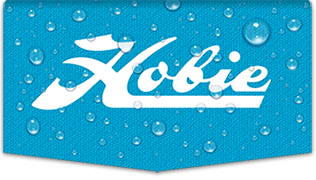|
Quite a trip ! Wish I could join you !
I am by no means an expert w.r.t. such a long an committing trip but I have a reasonable amount of experience (several years) of Hobie kayaks, regular Hobie trips and drive maintenance. I hope these ideas give you some food for thought at least:
The Outback has a lot of buoyancy but is a dog to paddle and in my experience (of the older hull shape) does not hold a course well. Personally I do not think the Adventure would be particularly well suited to a rapidly-flowing river - it is a great straight-line boat at the expense of manoeuvrability, kind of the opposite extreme to the Outback. Which leaves the Revolution if you plan to use a single - this would be where I would start when evaluating boats for such a trip. Dunno what the load carrying capacity of the boats is but of course you can get extra load carrying capacity from a double in which case the best choice would be the Oasis IMO. You'll get a lot of kit in the second cockpit which will balance the boat well, on the 2011 model you can singlehand the boat from either cockpit as both have a tiller, and one drive is powerful enough to propel the boat well, especially with Turbo fins fitted. Either way ensure you fit the larger rudder if not fitted as standard as this definitely improves the turning ability of all the boats.
Take plenty of drive spares and tools to fit them:
I recommend spare(s) of each sort of cable (they do wear out/break), fin masts (the Turbo ones snap after long hard use), fins (in case you tear them e.g. by grounding them) and a spare pedal assembly (i.e. Shaft & pedal. I think it is unlikely but I have had a pedal shaft - the square alu tube - snap. Even though they are 'handed' you only need one because they are quite serviceable even if installed on the opposite side than intended). N.B. a mirage drive is practically useless without 2 operational fins.
If you are taking one of the drives with either the set-screw or the screw-in fin masts you will probably want to take some spare sprocket sets too (because you will probably want to loctite the components together to prevent them coming apart, in which case part replacement may be your only option in the field). If using set screws, take some spare set screws with you - they are impossible to locate if you drop them in long grass ...or to recover if you drop them overboard.
My personal recommendation would be to try to source some of the older stainless steel sprockets and fit these to your expedition drive as broken fin masts are much easier to replace on these. If you do, you would want to carry spare split pins as well (pros: small, light, cheap and improvisable in the field) as these do wear out on the s/s sprockets. Also on the S/S drives correct adjustment of the cables is essential to prevent the chains from skipping sprockets - this is easy enough to achieve but you would need to ensure you know how to get it right.
One sure-fire way of making the drive more reliable over a long distance is to shun the turbo fins - being longer & with more surface area these put additional stress on the fin masts which are more likely to fail, so I would perhaps think about using the ST fins instead. The compromise is that the smaller fins require a faster cadence to achieve a given speed - which may be tiring once you are properly pedal-fit - but they also put less load on the legs and drive. You will be travelling downstream so the reduced power of the smaller fins may be a compromise worth making for improved reliability. If you decide to go for the Turbos I would make sure you have enough spare fin-masts especially if you are strong in the leg and intend to hammer the drive on your heavily laden boat. Longer fins=greater draft too, don't forget, and bashing the fins into underwater obstacles is not good for the masts - so if the river is shallow for large distances the shorter fins may, again, be of benefit.
|





